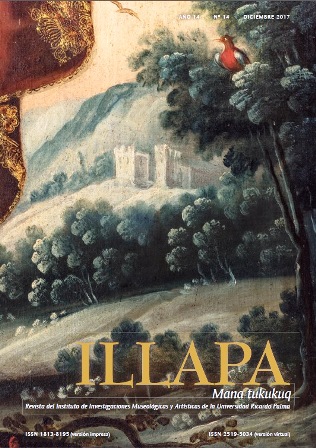Andrés Zevallos de la Puente: aproximación neuroestética al artista y su obra
DOI:
https://doi.org/10.31381/illapa.v0i14.1878Resumen
Don Andrés Zevallos de la Puente fue un ser humano especial que buscó desarrollar al máximo sus capacidades. En este artículo analizaremos sus palabras desde el punto de vista psicobiológico y neuroestético. Comenzaremos por su infancia; sus inicios en el arte, descubriendo a los pintores que había en su tierra; sus estudios y avatares personales; su obra, que nos llevará directamente al amor que sentía por su tierra y costumbres, formando parte de la corriente indigenista, para terminar con sus reflexiones sobre la espiritualidad, la muerte y sus últimos consejos a las futuras generaciones. El recuerdo que nos queda de él es que supo conciliar devoción y obligación en su larga vida, con sabiduría y tesón.
Palabras clave: neuroestética, vida, obra, indigenismo, resiliencia, espiritualidad, memoria.
Abstract
Don Andrés Zevallos de la Puente was a special human being who sought to develop his abilities to the fullest. In this article we will analyze his words from a psychobiological and neuroesthetic point of view. We begin with his childhood, his beginnings in art discovering the painters who lived in his land, his studies and personal avatars, his work that will lead us directly to the love he felt for his land and customs, being part of the Indigenist current; to end with his reflections on spirituality, death and his last advice to future generations. The reminder we have of him is that he was able to reconcile devotion and obligation in his long life with wisdom and tenacity.
Keywords: neuroaesthetics, life, work, indigenism, resilience, spirituality, memory.





2.png)



